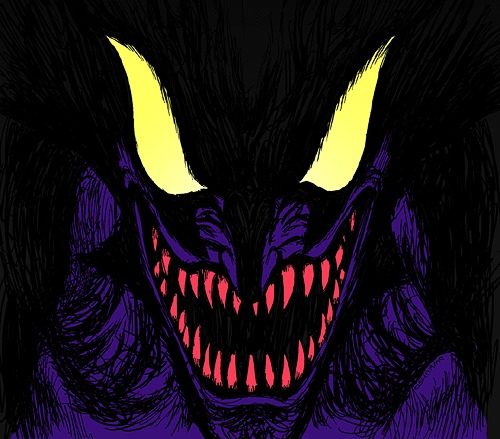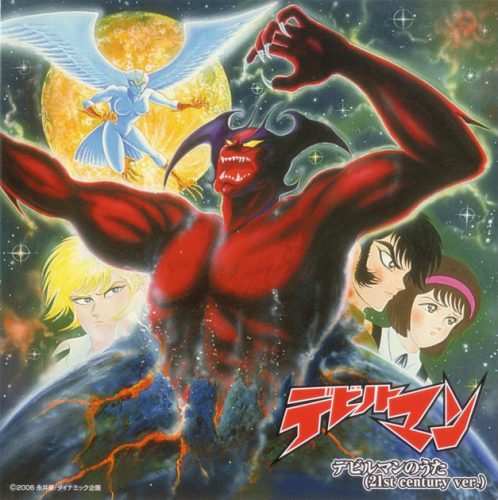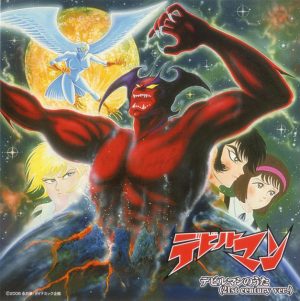
Go Nagai’s 1972 manga, Devilman, tells the story of Akira Fudo, a mild-mannered teen who unwittingly gets possessed by a spirit from the underworld and becomes a vicious demon hunter. And just as Nagai’s later project, Mazinger Z, is considered to be one of the biggest influencers of the mecha genre, Devilman has had an enormous impact on the works that came after it.
The manga’s top-selling original run, as well as its many adaptations and spin-offs (such as Devilman Lady and Violence Jack), have secured its place in the popular consciousness for the past four decades. Today, Devilman’s influence can be seen across countless genres and even pops up in non-Japanese media on occasion. So let’s take a look at how this classic manga inspired the creators of some of our favorite series to turn to the dark side.
Characters and Story

Akira’s relationship with his friend Ryo Asuka changes over time from close friendship to bitter rivalry and betrayal. But throughout all of this, there’s a sense of forgiveness and even love between the two that keeps them together at their very core. It may seem like a common trope now, but this complicated feud was revolutionary at the time and went on to inspire some of anime’s greatest duos.
The most obvious counterparts to Akira and Ryo are Guts and Griffith from Berserk. Both Devilman and its spiritual successor Violence Jack were heavy influences on the entire manga, but it’s easiest to see in the dynamic between the gruff, evil-looking hero who suffers and his angelic, feminine friend who betrays him. For another variation on this relationship, take a look at Madoka and Homura from Puella Magi Madoka Magica.
Parasyte, another classic manga that only recently got a full adaptation, took story inspiration from how the demons in Devilman seamlessly integrated into human society without anyone noticing. By changing the demons into morally ambiguous aliens who depend on humans for survival, author Hitoshi Iwaaki was able to explore how two wildly different species could co-exist with one another.
Visual Style
Perhaps the most iconic image from the entire Devilman mythos is Devilman’s ferocious head, with its leathery bat wings and glowing eyes. Morrigan from Darkstalkers clearly takes inspiration from Akira’s counterpart Jun from Devilman Lady, and Mega Man creator Keiji Inafune has stated that Zero’s helmet is a deliberate reference to Go Nagai’s work. The design of the demon Sirene, with a set of white bird wings adorning her head, has also influenced the likes of Ragyo Kiryuin from Kill la Kill and Zephyrmon from Digimon Frontier.
On a more broad scale, the destruction of the world as seen in the manga’s ending has had its share of homages. The Eclipse from Berserk bears a striking resemblance to the carnage and senseless betrayal found in Akira’s war against Satan, and the End of Evangelion uses similar Christian imagery and psychedelic visuals to portray a lone pair of humans left on an utterly destroyed planet. Hideaki Anno has even said that he wanted Neon Genesis Evangelion to have an ending similar to Devilman, which he finally was able to create once the movie was released.
Old Tropes in New Contexts
Devilman: Crybaby, the most recent adaptation of the manga, is thoroughly steeped in the modern era of smartphones and social media. If Crybaby was your introduction to the Devilman franchise, it may be hard to believe that its source material dates back to the early ‘70s. But the changes made to this otherwise very faithful adaptation serve two different purposes – to make the story more relatable to a 2010s audience, and to prevent itself from seeming retrospectively clichéd.
Even though Devilman was the first to popularize the Akira/Ryo-style relationship of friends to enemies to lovers (maybe), today’s anime fans would be bored with something that they’ve already seen in Berserk and Madoka. The hellish demonic war would seem like an End of Evangelion retread, and so on and so on. By updating the setting and making a few tweaks to the characters (like toning down Ryo’s yandere behavior and incorporating the time loop plot point from one of the spin-offs), the showrunners were able to create a complete adaptation of Devilman that could also stand on its own as a modern anime.
Final Thoughts

If you keep your eyes open, you can find Devilman references everywhere. Even My Hero Academia features a quick silhouette of Devilman amongst other iconic heroes during its initial explanation of quirks. And with Crybaby’s positive reception amongst anime fans, hopefully we’ll get to see even more of Nagai’s magnum opus in the future.
Where else can you find shows influenced by or referencing Devilman? What would you like to see more of in the future of the franchise? Let us know in the comments, and thanks so much for reading!
Recommended Post
Devilman is More Important Now than Ever Before
Recommended Post



